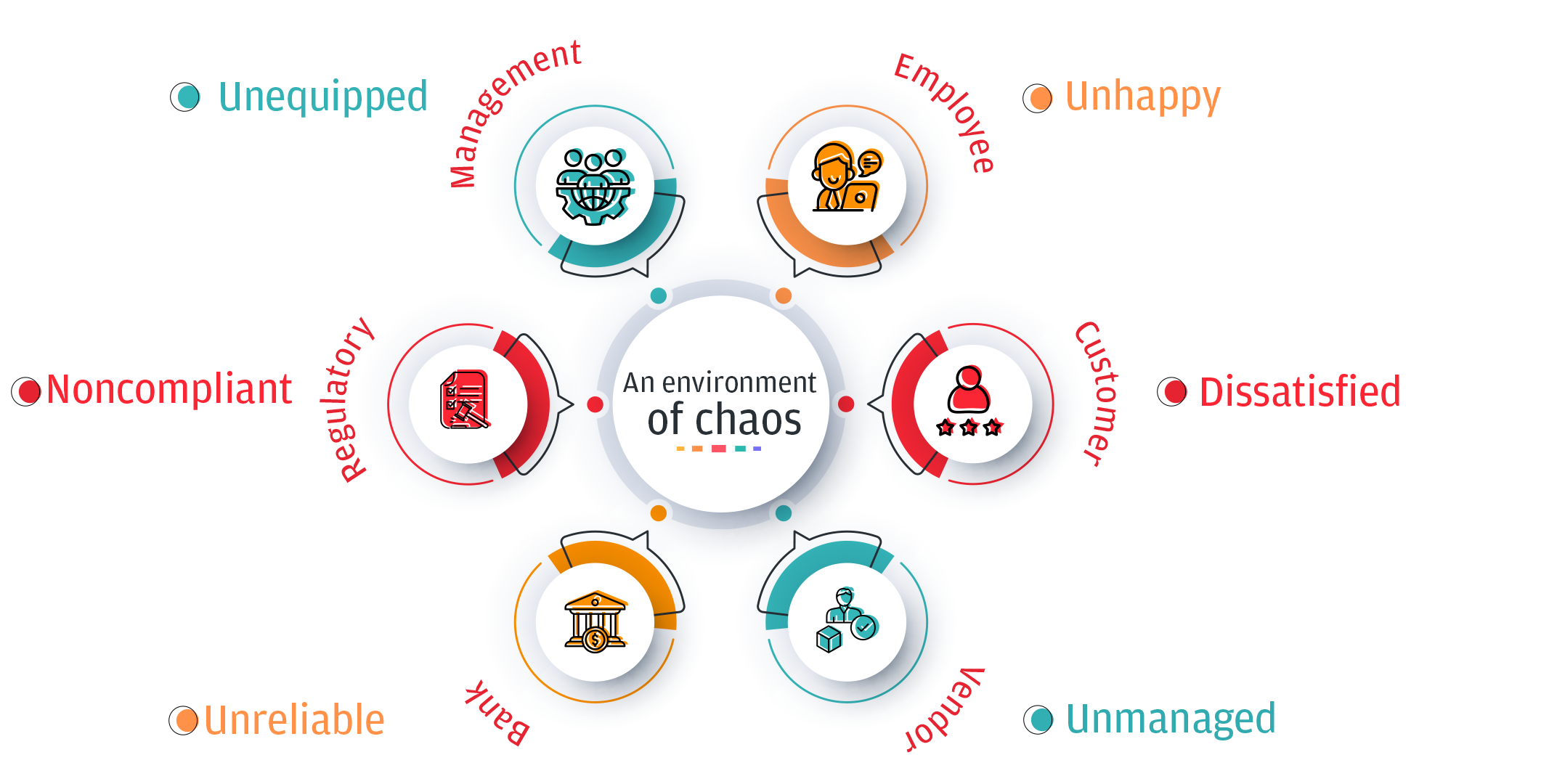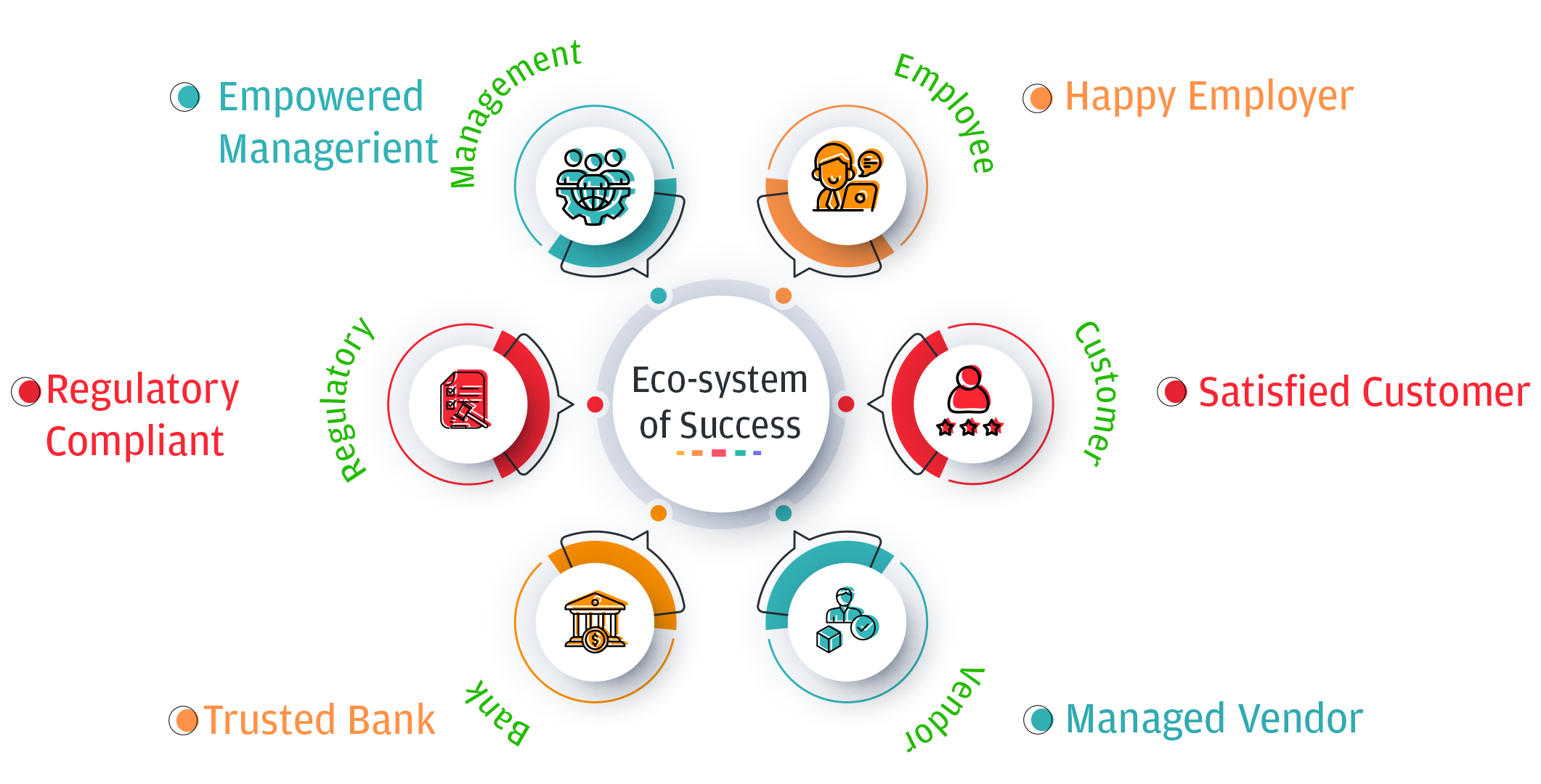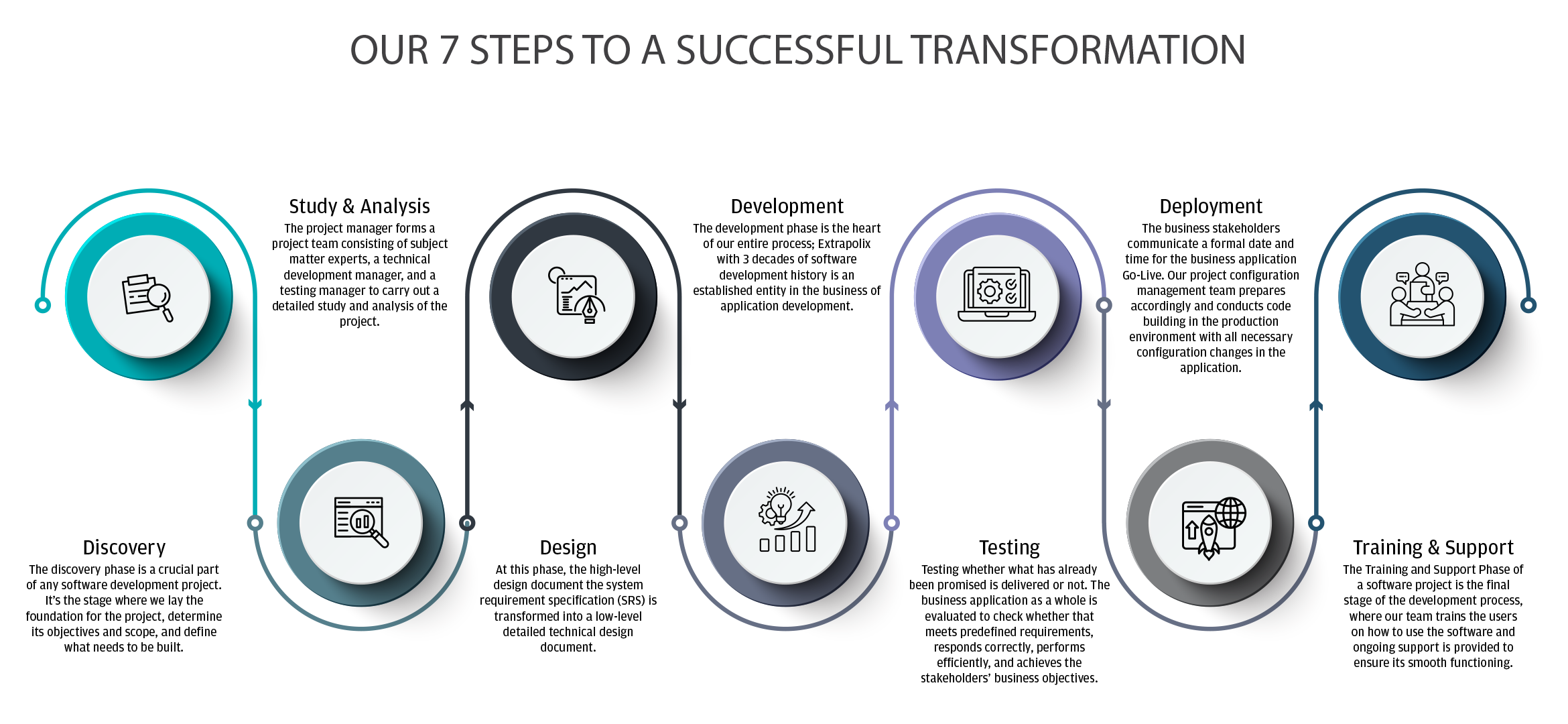Our Process
- Home
- »
- Our Process
Process of Transformation
Our process is our organisational culture developed brick by brick in last three decades. This process has been enriched by each of our valued members both present and past, learning from both failures and success. By and large, our biggest accomplishment is our customers’ experiencing transformation from their past state of misery to the current state of miracle, with our unique process.
State of Misery

Running a business in a competitive market is challenging. Management should focus on strategy, but daily crises often drain resources. Issues like data duplication, inefficiencies, high costs, and regulatory risks impact productivity and customer satisfaction. Poor workflow optimization leads to delays, cost overruns, and lost customers.

State of Miracle

Businesses start realizing benefits even before deployment, as key operational improvements are implemented early. Post-deployment, predefined project benefits seamlessly integrate into ongoing operations, aligning with business strategies. Standardized processes, optimized workflows, and efficient resource utilization drive measurable success.
OUR 7 STEPS TO A SUCCESSFUL TRANSFORMATION
Discovery
The discovery phase is a crucial part of any software development project. It’s the stage where we lay the foundation for the project, determine its objectives and scope, and define what needs to be built. During the discovery phase, we work with stakeholders to:
- Define the purpose
- Determine the goals
- Scope the project
- Gather requirements
- Create a high-level plan
- Agree on a solution
The discovery phase is a critical stage in the software development process and is the foundation for the rest of the project. We always ensure a well-defined and thorough discovery phase to make certain that the project runs smoothly and meets the needs of all stakeholders.
Study & Analysis
Here we formally assign a project manager and allocate relevant project resources to the project. The project manager forms a project team consisting of subject matter experts, a technical development manager, and a testing manager to carry out a detailed study and analysis of the project. At the onset of this phase, the project manager prepares a framework for managing the scope of the work and modalities around the collection of requirements.
In this phase, the team conducts the following activities:
- Requirement Gathering
- Functional Analysis
- Project Planning
In this phase, the team produces the following deliverables:
- System Requirement Specification (SRS)
- Project Plan
Design
At this phase, the high-level design document the system requirement specification (SRS) is transformed into a low-level detailed technical design document. In general, the high-level technology stack to be used is already decided at the proposal phase however minor technical details are left to the decision of the development manager.
In this phase, the team carries out the Technical Analysis.
In this phase, the team produces the following deliverables:
- Technical Design Document (TDD)
- Test Cases
Development
The development phase is the heart of our entire process; Extrapolix with 3 decades of software development history is an established entity in the business of application development. Both in terms of industry verticals and technology stack, Extrapolix has an accomplished track record. With a long history of development, we take pride in the high standard of code and the usage of modern frameworks. Extrapolix constantly invests in Research and Development (R&D) and updates development tools, technologies, standards, frameworks, and industry best practices. In this phase, the project team conducts the following development activities: Code Development, Code Review, and Unit Testing.
In this phase, the team conducts the following activities:
- Code Development
- Code Review
- Unit Testing
In this phase, the team produces the Unit Tested Code Build.
Testing
Testing whether what has already been promised is delivered or not. The business application as a whole is evaluated to check whether that meets predefined requirements, responds correctly, performs efficiently, and achieves the stakeholders’ business objectives. The business-approved System Requirement Specification (SRS) plays a vital role as a reference document during the entire course of testing. The project team conducts the following three (3) different types of testing during this phase: Integration Testing, System Testing, and User Acceptance Testing (UAT).
In this phase, the team conducts the following activities:
- Integration Testing
- System Testing
- User Acceptance Testing
In this phase, the team produces the UAT Signed-off Code Build.
Deployment
The business stakeholders communicate a formal date and time for the business application Go-Live. Our project configuration management team prepares accordingly and conducts code building in the production environment with all necessary configuration changes in the application. During the project planning phase, a small plan component called Configuration Management Plan is prepared. This contains how the information about the source code and application hardware and software configuration is recorded and updated so that the product, service, or result of the project remains consistent and/or operative.
In this phase, the team conducts the Configuration Management broadly covering the following activities:
- Version Management
- Release Management
- Production Environment Setup
Training & Support
The Training and Support Phase of a software project is the final stage of the development process, where our team trains the users on how to use the software and ongoing support is provided to ensure its smooth functioning. We ensure that the software is adopted and used effectively, resulting in its successful implementation.
Training:
Our training activity involves educating users on the software’s functionalities, features, and user interface. This is done by providing a user manual, online help facilities, interactive training sessions, or video guides. Our team carries out the training to ensure that users are comfortable with the software and can use it effectively to achieve their goals.
Support:
Once the software is live, we start the support phase ensuring that users can effectively use the software and can resolve any issues that may arise during their use. The support team is responsible for providing assistance and troubleshooting any issues that users may encounter. We provide support through online chat support, email support, or phone support.

Conclusion
The transformation journey from a State of Misery to a State of Miracle is not just about implementing a new system but about adopting a culture of continuous improvement.
Our proven process, built on three decades of experience, ensures that businesses overcome operational inefficiencies, improve resource utilization, and enhance customer satisfaction.
By following our structured 7-Step Approach, we enable organizations to seamlessly transition into a state where efficiency, productivity, and profitability become the norm. With every project we undertake, our commitment remains the same – to empower businesses with innovative solutions that drive sustainable growth and success.
Join us on this journey and experience firsthand how our process can turn challenges into opportunities and inefficiencies into excellence.
Streamline Your Workflow with Extrapolix
Optimize processes, enhance efficiency, and drive business growth with our innovative solutions.
